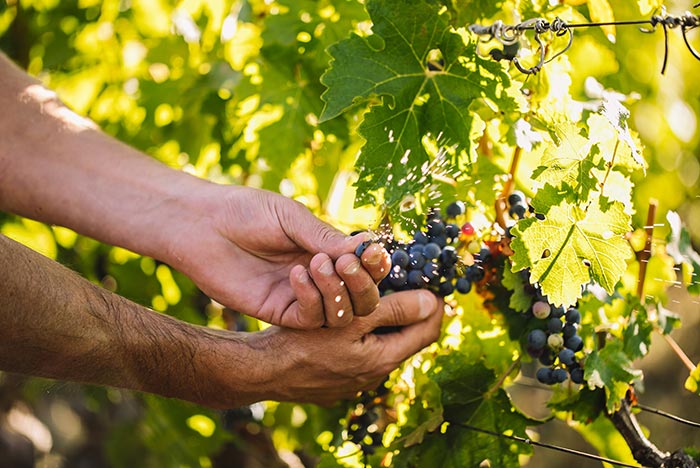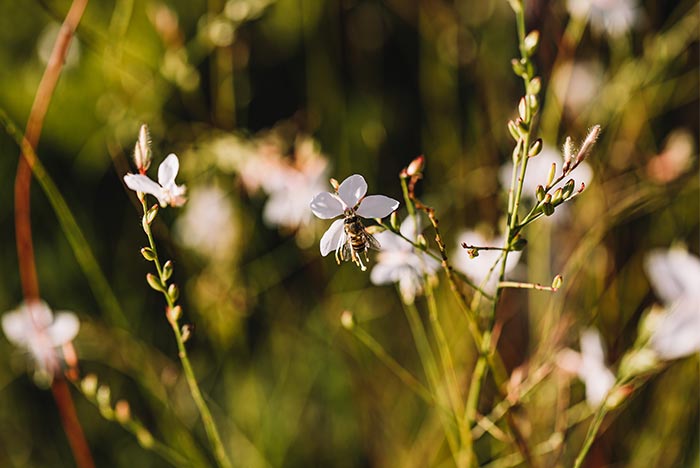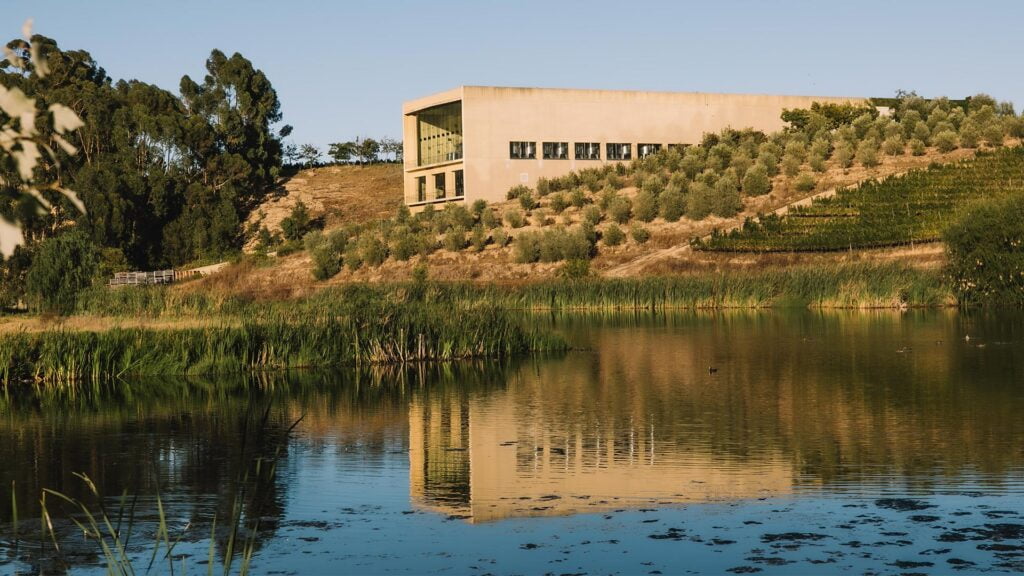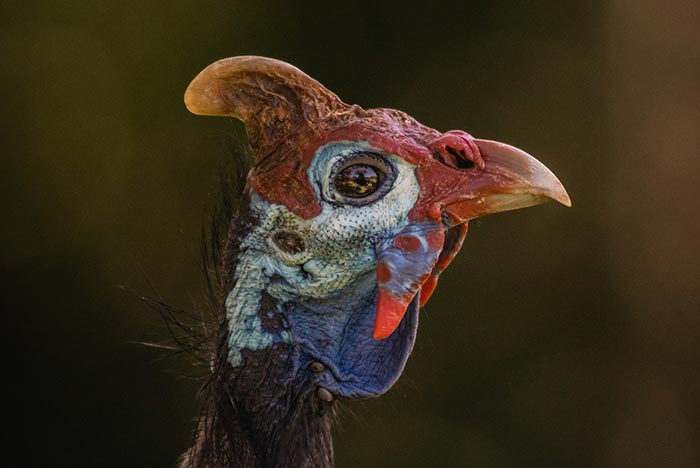SUSTAINABILITY ON THE ESTATE
Between the vineyards and the winery, we do our utmost to ensure a minimal carbon footprint. See the steps we have made towards a more sustainable future.
OUR VINEYARDS

Soil
In the vineyards, we promote biodiversity and improve the life of the soil by avoiding using any herbicides or pesticides. The planting of cover crop between the rows encourages the predators of the vines’ “enemies”, but also fixes the nitrogen present in the air into the soil. This cover crop is then rolled flat, which minimizes weeds growth and improves water retention at the same time. For the same reason, when pruning, the cuttings are mulched and placed beneath the vines.
Vines
2018 was an experimental year where we decided to convert two blocks (Chardonnay and Merlot) to organic viticulture. In 2019, we expanded the organic vineyard to 15 hectares.
From 2020, the decision was taken to go fully organic, with the idea of getting certified by 2025.


Flora
A programme of alien vegetation removal is in place where blue gum (eucalyptus), wattle, and pine trees are being replaced with native fynbos. This greatly increases the water holding capacity of the soil, allowing for less irrigation.
Proteas have been planted all along the border of the vineyard. These encourage a healthy population of wasps, which in turn control the mealybugs (a vector in the spread of leafroll).

Water
The necessity to manage water resources carefully is a top priority for us with the severe droughts South Africa has endured these past few years. Water levels in the soil are monitored, allowing for minimal use of irrigation.
Glenelly has a virtually closed system of water usage. The origin of the water is a borehole on the property. The water is purified and then transferred to the winery for cleaning purposes etc. After it is used, the water is purified again, and then sent to the various estate dams. It is then used for irrigation in the vineyards and filters back through the ground to the borehole.

Wildlife
Many native animals call Glenelly Estate home, including 160 species of birds, among them fish eagles and paradise flycatchers. We also host duikers, porcupines, caracals, mongooses. We’ve seen signs of the elusive Cape Leopard roaming the hills around the Estate but we are yet to see one.
OUR WINERY
Glenelly Estate’s state-of-the-art cellar was specifically built with environmentally friendly practices in mind. The ochre concrete used in the building’s exterior was even custom coloured to match the farm’s soils, to reduce the visual impact on our beautiful landscape.
CoNCEPT
The four-level gravity-fed cellar is one of the most modern in the country. It was sunken on the eastern side of an old quarry, which means that it is only exposed to the gentle morning sun and protected from the harsh heat of the afternoon. The 300sqm glass facade gives the building natural light which reduces electricity consumption and creates a much better and safer working environment for the team.
Concrete was used in the construction of the cellar for a reason: it is thermally very stable and needs very little energy to maintain a required ambient temperature. 15 kilometres of pipes snake through the walls and ceilings, with cold water running through them. This results in 70% energy savings, compared to a traditional cooling system.


Energy
The roof contains a series of void formers – cylindrical tubes locking air inside the structure, which again gives it great thermal stability because air is a very poor conductor of heat.
Solar panels cover the whole flat surface of the roof making the winery self-sufficient for electricity.
Gravity also means that pumping of the wine is very limited, having the benefit of reduced energy consumption and softer “touch” on the wines.
Waste
All cellar waste gets composted and returned to the vineyards. Glass, cardboard, plastic, and wine barrels are all recycled.

